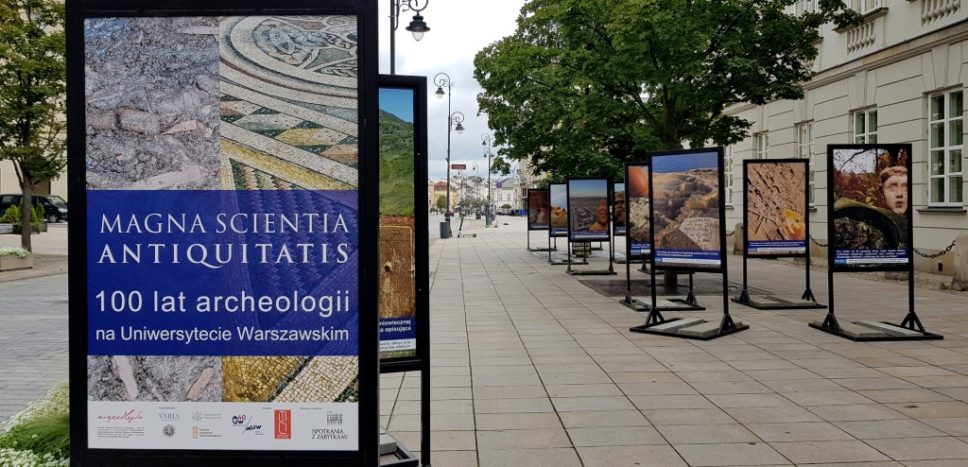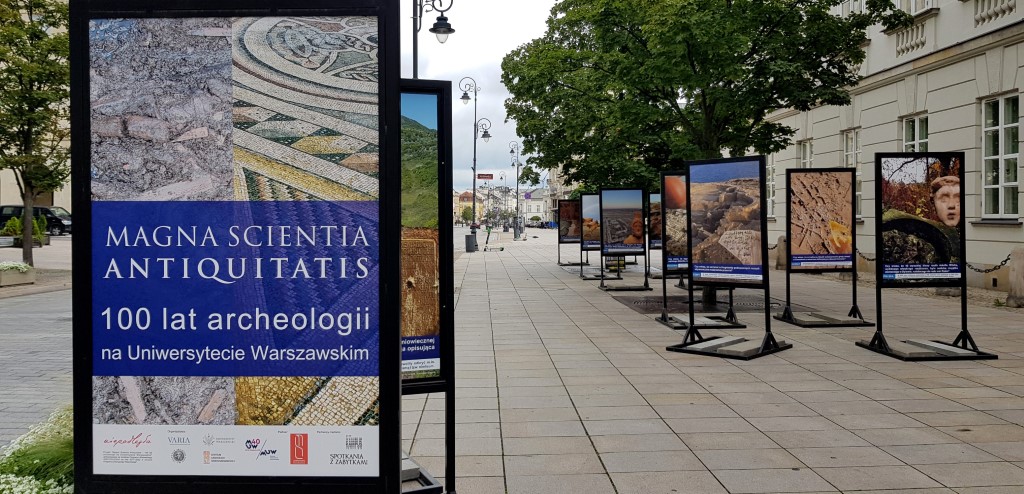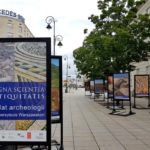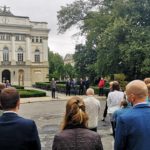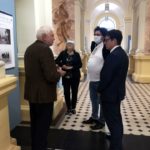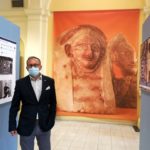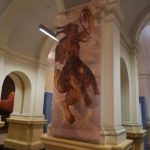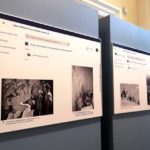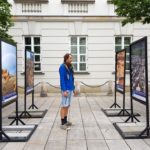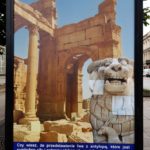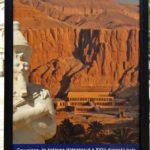The Magna Scientia Antiquitatis. 100 years of archaeology at the University of Warsaw exhibition shows the scope of archaeological work conducted around the world by researchers from the University of Warsaw. It was officially opened on 2nd September 2020 during an open-air vernissage.
The opening’s guests were welcomed by Prof. Alojzy Nowak, the Rector of the University of Warsaw, who expressed his appreciation for the achievements of archaeologists working at the University of Warsaw, associated with the Institute (as of 1st September – the Faculty) of Archaeology and with the Polish Centre of Mediterranean Archaeology. He emphasized the recognition the researchers from the University of Warsaw enjoy on all continents. He also expressed his readiness to support and promote the activities of the archaeological community.
“It is worth being around archaeologists. They show us the beauty of the past and the beauty of history” said Rector Nowak.
Assoc. Prof. Bartosz Kontny, the dean of the newly established Faculty of Archaeology and Assoc. Prof. Krzysztof Jakubiak, the outgoing director of the Institute of Archaeology, thanked the authorities of the University of Warsaw for their continued support.
Speaking on behalf of the PCMA UW, Prof. Piotr Bieliński, the president of the PCMA UW Scientific Council, quoted the history of the PCMA, which at the time of its establishment 60 years ago coordinated the activities of Polish archaeologists in Egypt, Sudan, Syria and Cyprus, whereas recently it has conducted research in 15 countries.
The exhibition was initiated by the University of Warsaw Museum, with financial support from the Niepodległa program. During the opening, Assoc. Prof. Hubert Kowalski, the director of the museum, explained the unconventional character of this exhibition.
The first part of the exhibition is located in Krakowskie Przedmieście st., near the main gate of the University, which makes it available to passers-by at any time of day and night. This part of the exhibition presents interesting facts from the University’s research abroad conducted by all the archaeological units: the Institute of Archaeology (now the Faculty of Archaeology), the Polish Centre of Mediterranean Archaeology, the Research Center on the Antiquity of Southeastern Europe, and the Center for Pre-Columbian Studies. Several of the PCMA projects were presented, including sites in Egypt, Sudan, Syria, Lebanon, Cyprus, and Kuwait. One of the featured facts is the origin of the PCMA logotype, which is based on the image of a lion from a bas-relief discovered in Palmyra.
The second part of the exhibition is devoted to the history of archaeological research at the University of Warsaw. It is located in the Old University Library, while the third one in the Faculty of Archaeology building, presents didactic collections of archaeological objects.
The exhibition will last until November, however, according to an announcement by the University of Warsaw Museum’s director, it is only the first part of a larger project, the next stage of which will be on display on 11th November.
-
Plenerowa część wystawy. Fot. A. Szymczak
-
Przemówienie prof. Piotra Bielińskiego w imieniu CAŚ UW. Fot. A. Szulc-Kajak
-
JM prof. Alojzy Z. Nowak, rektor UW zwiedza ekspozycję. Fot. A. Szulc-Kajak
-
Dr Artur Obłuski, dyrektor CAŚ UW na wystawie. Fot. A. Szulc-Kajak
-
Dr. hab. prof. UW Tomasz Waliszewski, kierownik ekspedycji CAŚ UW w Libanie, na tle perskich terakotowych masek odkrytych w Jiyeh. Fot. A. Szulc-Kajak
-
Wizerunek tancerza ze ściany klasztoru w Starej Dongoli. Fot. A. Szulc-Kajak
-
Część ekspozycji poświęcona historii badań, Dawna BUW. Fot. A. Szulc-Kajak
-
Plenerowa część wystawy. Fot. A. Szymczak
-
Informacje o genezie logotypu CAŚ UW, plenerowa część wystawy. Fot. A. Szymczak
-
Ciekawostka związana z odkryciami ekspedycji CAŚ UW w Deir el-Bahari. Po więcej ciekawostek zapraszamy na Krakowskie Przedmieście. Fot. A. Szymczak

